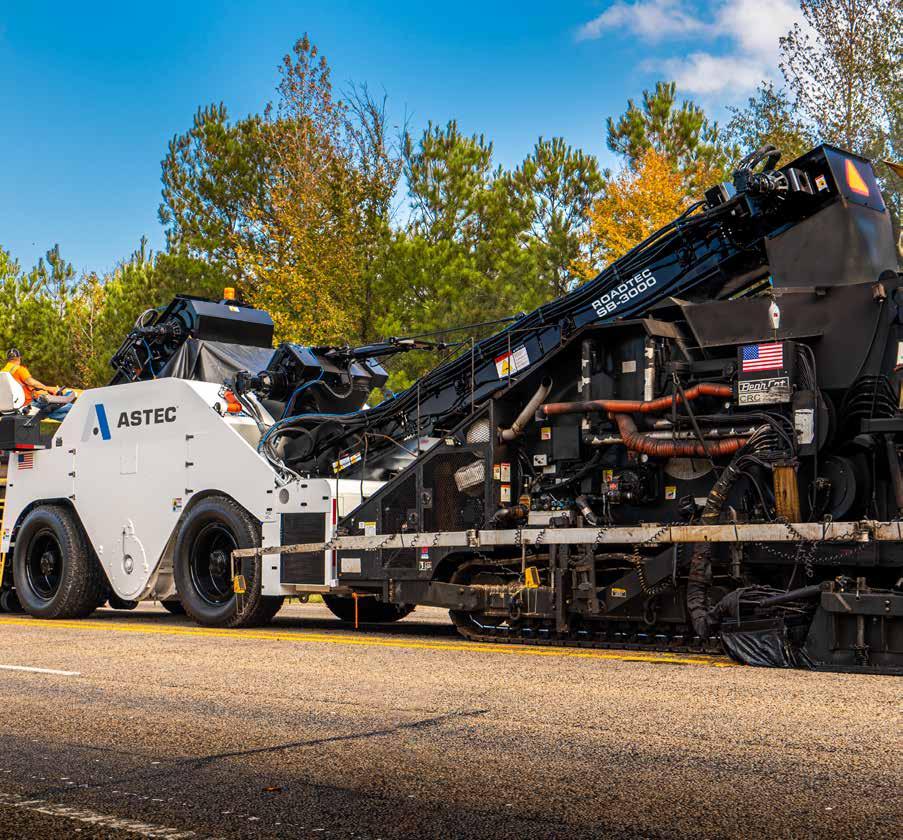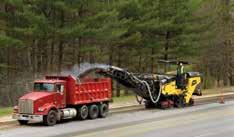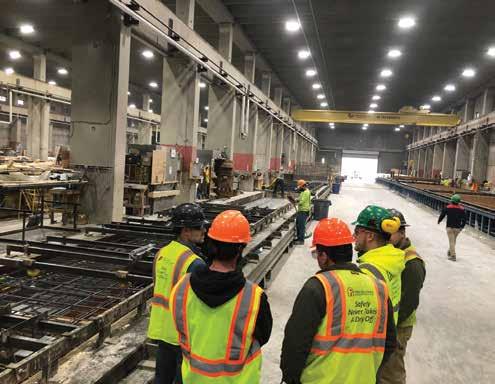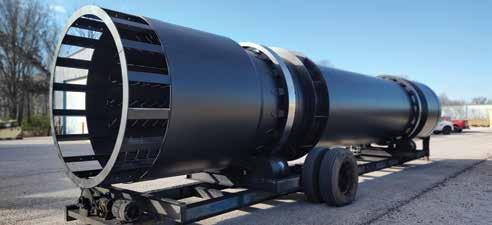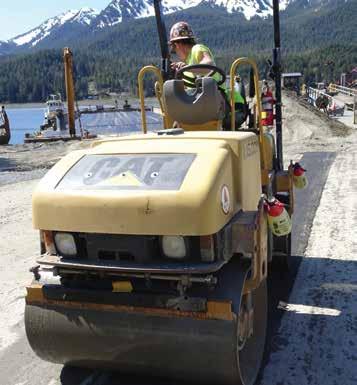
5 minute read
Making the Shift on S.T. Wooten’s I-40 Road Widening Project
Production of over 1.2 million tons of asphalt mix for the I-40 project is being supported by two asphalt plants that were installed adjacent to the work zone in the towns of Garner and Clayton. Photos courtesy of S.T. Wooten Corporation
BY MATT DAVIS
As temperatures began to rise this past spring, work was heating up on S.T. Wooten’s 13-mile highway widening project on I-40 between Raleigh and Clayton. From March through June, the project went through a series of traffic shifts to help crews transition into a new phase of construction while keeping traffic flowing for the traveling public.
This work signified a major milestone in the progression of the project and required a coordinated effort from crews and the leadership team. Weekend work, night work, rotating shifts and tight timelines make one traffic shift a heavy lift. Completing eight such shifts in three months calls for even more hard work and careful planning.
KEEP UP THE PACE
For the I-40 expansion project, crews are adding two new lanes in each direction. Fourlane sections of the interstate will be extended to eight lanes and six-lane sections to ten lanes. S.T. Wooten is also managing construction of 15 new or revamped bridges and two new diverging diamond interchanges to help improve traffic conditions along this stretch.
Traffic shifts coincide with progress happening on the project, which began in 2018. As work is being completed in one portion, establishing a new pattern allows for crews to transition to the next phase and keep traffic flowing for the public. At press time, crews were finishing up work in the outer lanes from I-440 to the 70 Bypass and hoped to complete the shift for the final pattern by spring of 2023.
THE RIGHT MIX
As crews have made strides to keep traffic disruptions to a minimum, paving work has been progressing on I-40. Existing lanes are receiving a 9.5-inch asphalt overlay on top of existing concrete. New lanes will use recycled

About 600,000 tons of total asphalt mix had been placed as of press time with another 625,000 tons to go. The installation of a materials conveyer—from the Clayton plant—will give crews direct access to the site. The conveyor and access ramp will take more than 42,000 loads out of the traveling public traffic stream.
concrete from the old shoulders as aggregate subgrade. The base consists of a 12-inch layer of type 1 stone for the aggregate subgrade and 8 inches of ABC. On top of the stone is a 13.5inch asphalt structure that consists of multiple layers of base, binder and surface.
So far, about 600,000 tons of total asphalt mix have been placed on the project. Production has been supported by two asphalt plants that were installed adjacent to the work zone in the towns of Garner and Clayton to help alleviate some issues with traffic congestion. A temporary ramp was also created from a closed highway bridge that runs down into the median for easy site access.
With approximately 625,000 tons of asphalt left to be placed for the project, a materials conveyer will soon be installed from the Clayton plant that will give crews direct access to the site. The conveyor, in combination with the access ramp, will help save more than 42,000 loads from being hauled in traffic by the time work is completed.
TRANSITIONS ON TRACK
Traffic volume is the most consistent challenge on I-40 as thousands of commuters and travelers come through the area each day. Closing some of the lanes down for road work—even at night—is difficult for the public. That’s why work on each of the eight recent traffic shifts was scheduled for weekends to keep public interruption to a minimum.
This kind of weekend work can be tough on workers. Getting everything done before Monday means having to rotate shifts so work can remain continuous until sections are completed. In one instance, a ramp had to be closed for a weekend while it was being renovated. In just two days, crews managed to: • Dig up the old ramp’s pavement. • Install new drainage systems. • Regrade the ramp area. • Pave the new ramp back. • Tie the ramp back in to the main line.
The traveling public isn’t always aware of the focus and hustle it takes behind the scenes to successfully complete all these activities on a condensed timeline. Construction crews work hard, day and night, to ensure the smoothest possible transition. They deserve a large amount of credit for the work they do to support the community.
For the management team, completing a complex series of traffic shifts can be a juggling act that requires an ability to adjust when it comes to planning and schedules for crews and subcontractors. Preparation isn’t only about the grading and paving work. Teams lay out the new traffic patterns, paint the lines, install temporary barriers and install signage to accommodate these new patterns.
Each component must be ready and work in synchronization. If one end of the new pat-
tern is paved and marked but the other isn’t, crews still will not be able to shift until the work is finished. The NCDOT has specific deadlines for when lanes must reopen—generally before rush hour traffic starts on Monday morning. If the lanes aren’t reopened on time, the company faces hefty fines, which are often calculated in 15-minute increments.
TEAMWORK MAKES THE DREAM WORK
While the work on I-40 takes enormous coordination, experience is on S.T. Wooten’s side. The company has worked with the NCDOT on multiple high-dollar state road construction projects. Crews understand what is at stake and the impact their work has for the ongoing success of the company. Accountability and close communication have been instrumental with so many moving parts on the project.
Collaboration across the board—from coordination between the quality control testing lab and plant crews to those working onsite—has helped the team avoid issues with mix or density during laydown as well. Teamwork will continue to be important as crews build momentum and ensure a smooth surface through the final stages of paving.
Thanks to the hard work from crews on I-40, the project is moving forward on schedule for the 2024 deadline. Around 400 workers, touching every division in S.T. Wooten’s company, will have played a part in its success. Continued teamwork and collaboration will ensure that each remaining milestone is achieved along the way and that the project gives the public something to be thankful for when the job is done.
Matt Davis is a project manager for S.T. Wooten Corporation.




